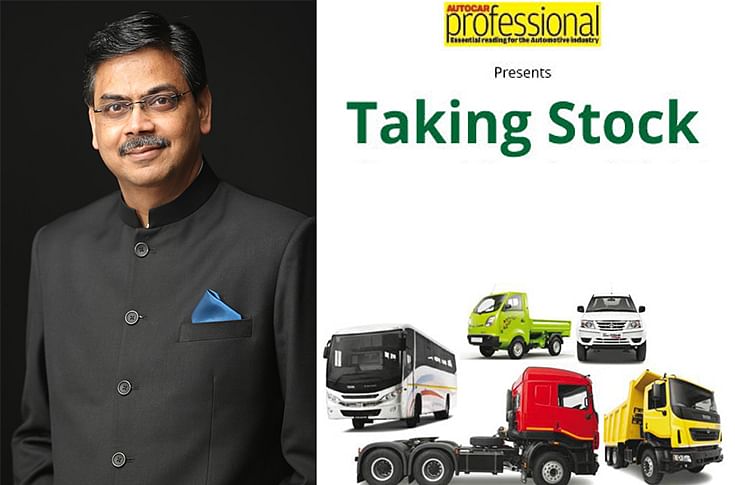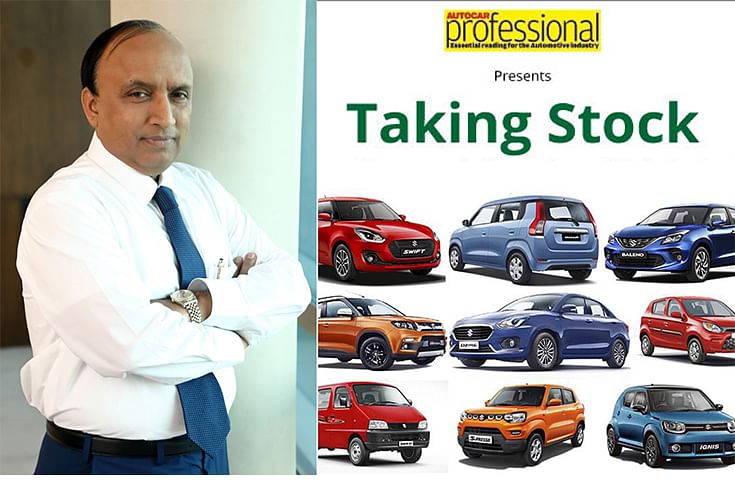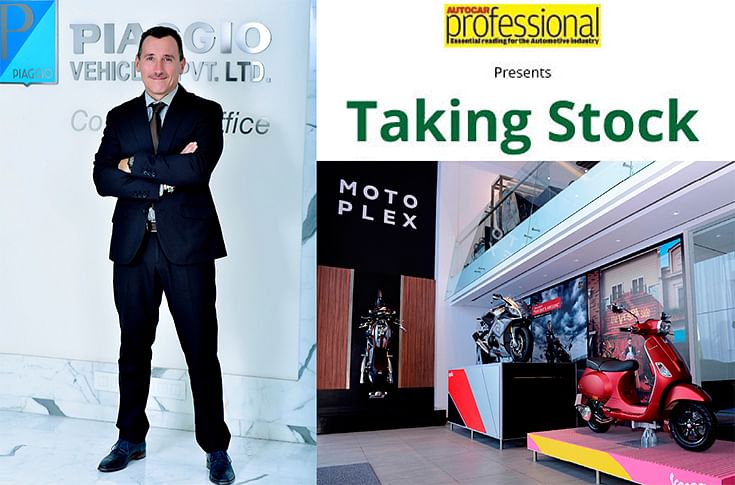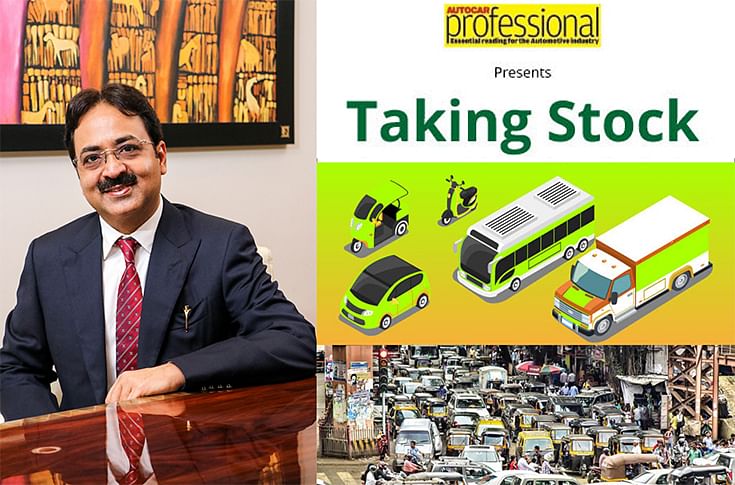India Auto Inc hopeful on a smart performance in Q4FY2021
Despite positive growth expectations in Q4, industry expects full recovery to 2018-2019 levels to take at least 2-3 years.
Like the rest of the world, the Indian automotive industry took a hard knock from the pandemic in 2020. With the extremely challenging year behind us, and vaccination programmes all set to start, there's hope and optimism in the air. In terms of absolute numbers, the automotive industry is still in negative territory, but there are signs of improvement. The latest being in the medium and heavy commercial vehicle segment, often referred to as the barometer of the economy.
As the auto industry gradually limps its way towards normalcy, Autocar Professional hosted an exclusive panel discussion, ‘Taking Stock’, on January 18 to take a comprehensive look at the industry's status, trends, opportunities and challenges, as well as the outlook for the year and beyond. The panellists representing all key segments included:
- Girish Wagh, President – CVBU, Tata Motors
- Shashank Srivastava, Executive Director, Marketing & Sales, Maruti Suzuki
- Diego Graffi, MD and CEO, Piaggio Vehicles
- Vinkesh Gulati, President, FADA
The webinar was moderated by Autocar Professional's Sumantra B Barooah.
Girish Wagh: “Expect to cross the previous peak in 3-4 years.”

The discussions was kickstarted by Girish Wagh, President – CVBU, Tata Motors representing the commercial vehicle sector, pointed out that the, “degrowth set in with the introduction of Axle norm. Transition to BS VI from BS IV and Covid-19 aggravated the trough. The industry saw a massive 30-35 percent decline in FY2020. By December 2020, we have seen 38 percent decline. The highest decline was in buses followed by trucks. Q1 FY2021 was a washout but we saw improvement subsequently in Q2, Q3.”
He explained that this is “not recovery, but rebound driven by small commercial vehicles given the boost seen in e-commerce, improvement in rural economy, demand for mining and tippers growing on the back of infra projects, also some growth in M&HCV cargo segment.”
That said, supply chain constraints continue for the sector as a whole and its impact can be seen in the CV space too. Wagh explained that, “Streamlining the supply chain during lockdown was a key challenge, most of these issues have been addressed by the first half of Q3. The semi-conductor issue coming forth by the second half of Q3. The global semiconductor shortage, due to the shift to feed personal electronics, is creating a bottleneck in the smooth functioning of the supply chain. It is affecting Tata Motors’ CV operations as well."
Electrification is another major theme seen across the automobile sector. In the CV space, Wagh listed out small LCVs as the top candidates, “We have 215 electric buses, which have clocked over 7 million kilometres, plying in 5 cities. Now have huge experience of operating in Indian conditions. We have begun deliveries for BEST in Mumbai. Small CVs and LCVs are good candidates for electrification.” That said, he feels, “Migration to battery electric vehicle will depend on key factors like support from government and the time in which we can achieve cost parity in the commercial vehicle segment.”
But what’s his expectation about the future and the growth trajectory going forward? Wagh expects a strong performance in Q4 FY2021, “The CV industry typically takes 24 months to get out of a slowdown. There's been 15-16 percent growth in December 2020. I expect strong YoY growth in Q4 FY2021.” According to him, “Expect to cross the previous peak in 3-4 years. From here-on expect to see the upward cycle. The previous peak was 1 million 65 thousand.”
Shashank Srivastava: “The cost of battery development technology is crucial in determining the timeline for migration to EVs”

The pace of recovery has been significantly more pronounced in the passenger vehicle space. Shashank Srivastava, Executive Director, Marketing & Sales, Maruti Suzuki said, “In the financial year of 2018-19, we sold around 3.37 million cars, and it fell to 2.6 million, last year. This is down by 18 percent. The current year started with a very bad time as there were no retail sales for the first time ever. April had zero sales and the sales were down by 80 percent. But, we saw some growth in Q2 and Q3. And, therefore we expect to post strong growth in Q4 YoY. When compared to the previous year, we are still off about 30 percent. Even if we have a good Q4, we will still be down 5-6 percent compared to FY2020 and the degree of decline will be deeper compared to FY2019.”
He also pointed out that the cost of acquisition has gone up due to the changes in norms and increase in cost of various factors like insurance and road taxes. Recent projections, indicate the retail growth to be higher than wholesale in Q4. “Wholesale growth might be lower due to supply constraints. Rural demand seems to be holding and is helping the positive sentiment. With a good monsoon and strong Agri growth, the industry is expected to bounce back. But, the new demand will depend on how it will pan out. This will largely determine the actual degree of recovery. Also, until there is uncertainty, manufacturers will be hesitant to give forward projections,” Srivastava, said.
Though many companies are coming out with an EV, Maruti has not been in this area. Explaining the company’s rationale, Shashank said that, “the cost of battery development technology is crucial in determining the timeline for migration to EVs. That will be the inflexion point for transition to EVs, may reach this point in 5-6 years. In markets like India, charging infrastructure a key issue to look at. And, range anxiety especially for smaller cars is another matter of concern.”
“There is no point in bringing technology just to showcase it. You cannot make a definitive change to the environment, without volume, practical and sustainable solutions and large scale projection. This is the current scenario. EV in India will be through the hybrids as the components are more or less similar. This will increase localisation and control cost. One other alternative is CNG. This has grown by 25% this year, even when the market is down by 60-70%,” he added.
Sharing his views on future demand, he mentioned that it would be decided by many factors. The fuel prices remain a negative trend and on the liquidity front, the interest rates are likely to stay benign. He expects, “Industry should end this year at 2.61-2.62 million units. Over a 5-year period with a 8-9 percent CAGR, expect 4.9-6 million units.”
Diego Graffi: “Expect to reach 2018-2019 levels in next 24 months”

The two- and three-wheeler space has been seeing considerable traction. Diego Graffi, MD & CEO, Piaggio Vehicles said, “Recovery has been good in Q2FY2021, the pace is picking up. The cargo segment is also seeing good recovery given the boost to e-commerce and vibrant rural economy.”
However, he pointed out that. “Shared mobility is still under weather given that schools and most offices still operating online. This is one of the biggest constraints for this segment to reach FY2019/FY2018 levels. Full recovery will still take considerable time.”
Electrification, especially in the last-mile connectivity space is seen as a major game-changer. Graffi explained that, “Battery swapping is expected to address some of the concerns about range and cost with regards to EV ownership. We are encouraged by the demand seen for EVs at the moment and see huge potential for EVs in the cargo space. I expect electric 3-wheeler market to reach 5000-6000 volumes. However, well-designed EV policies are crucial for EV volumes to take-off.”
So what’s his outlook going forward? According to Graffi, “We expect to see more launches, See a positive outlook. Expect to reach 2018-2019 levels in next 24 months.”
Vinkesh Gulati: “Unlikely to see positive growth in Q4 till supply chain normalises.”

Vinkesh Gulati, President, FADA brought in the retail perspective to the discussion. He pointed out that, “inventory levels gradually normalising but still a long way to go. December was the first month in FY2021 when we clocked YoY growth, in terms of sales.”
But he cautioned that, “Production issues are still a concern, unlikely to see positive growth in Q4 till supply chain normalises.”
Charting the future for the automobile sector, especially for dealerships, he expects, “Phygital is the way forward. There is an increasing need for dealerships to be cost effective.”
Read More Budget 2021: The automobile industry’s wish-list
RELATED ARTICLES
Cosmo First diversifies into paint protection film and ceramic coatings
The Aurangabad, Maharashtra-based packaging materials supplier is leveraging its competencies in plastic films and speci...
JSW MG Motor India confident of selling 1,000 M9 electric MPVs in first year
The 5.2-metre-long, seven-seater luxury electric MPV, which will be locally assembled at the Halol plant in Gujarat, wil...
Modern Automotives targets 25% CAGR in forged components by FY2031, diversifies into e-3Ws
The Tier-1 component supplier of forged components such as connecting rods, crankshafts, tie-rods, and fork bridges to l...






 18 Jan 2021
18 Jan 2021
 5552 Views
5552 Views





 Autocar Professional Bureau
Autocar Professional Bureau




